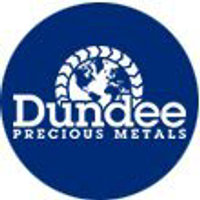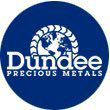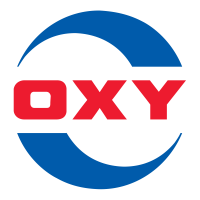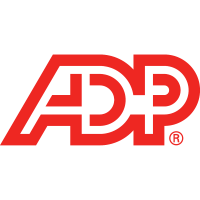
Dundee Precious Metals Inc
TSX:DPM


| US |

|
Fubotv Inc
NYSE:FUBO
|
Media
|
| US |

|
Bank of America Corp
NYSE:BAC
|
Banking
|
| US |

|
Palantir Technologies Inc
NYSE:PLTR
|
Technology
|
| US |
C
|
C3.ai Inc
NYSE:AI
|
Technology
|
| US |

|
Uber Technologies Inc
NYSE:UBER
|
Road & Rail
|
| CN |

|
NIO Inc
NYSE:NIO
|
Automobiles
|
| US |

|
Fluor Corp
NYSE:FLR
|
Construction
|
| US |

|
Jacobs Engineering Group Inc
NYSE:J
|
Professional Services
|
| US |

|
TopBuild Corp
NYSE:BLD
|
Consumer products
|
| US |

|
Abbott Laboratories
NYSE:ABT
|
Health Care
|
| US |

|
Chevron Corp
NYSE:CVX
|
Energy
|
| US |

|
Occidental Petroleum Corp
NYSE:OXY
|
Energy
|
| US |

|
Matrix Service Co
NASDAQ:MTRX
|
Construction
|
| US |

|
Automatic Data Processing Inc
NASDAQ:ADP
|
Technology
|
| US |

|
Qualcomm Inc
NASDAQ:QCOM
|
Semiconductors
|
| US |

|
Ambarella Inc
NASDAQ:AMBA
|
Semiconductors
|
Utilize notes to systematically review your investment decisions. By reflecting on past outcomes, you can discern effective strategies and identify those that underperformed. This continuous feedback loop enables you to adapt and refine your approach, optimizing for future success.
Each note serves as a learning point, offering insights into your decision-making processes. Over time, you'll accumulate a personalized database of knowledge, enhancing your ability to make informed decisions quickly and effectively.
With a comprehensive record of your investment history at your fingertips, you can compare current opportunities against past experiences. This not only bolsters your confidence but also ensures that each decision is grounded in a well-documented rationale.
Do you really want to delete this note?
This action cannot be undone.

| 52 Week Range |
7.98
14.55
|
| Price Target |
|
We'll email you a reminder when the closing price reaches CAD.
Choose the stock you wish to monitor with a price alert.

|
Fubotv Inc
NYSE:FUBO
|
US |

|
Bank of America Corp
NYSE:BAC
|
US |

|
Palantir Technologies Inc
NYSE:PLTR
|
US |
|
C
|
C3.ai Inc
NYSE:AI
|
US |

|
Uber Technologies Inc
NYSE:UBER
|
US |

|
NIO Inc
NYSE:NIO
|
CN |

|
Fluor Corp
NYSE:FLR
|
US |

|
Jacobs Engineering Group Inc
NYSE:J
|
US |

|
TopBuild Corp
NYSE:BLD
|
US |

|
Abbott Laboratories
NYSE:ABT
|
US |

|
Chevron Corp
NYSE:CVX
|
US |

|
Occidental Petroleum Corp
NYSE:OXY
|
US |

|
Matrix Service Co
NASDAQ:MTRX
|
US |

|
Automatic Data Processing Inc
NASDAQ:ADP
|
US |

|
Qualcomm Inc
NASDAQ:QCOM
|
US |

|
Ambarella Inc
NASDAQ:AMBA
|
US |
This alert will be permanently deleted.
 Dundee Precious Metals Inc
Dundee Precious Metals Inc






 You don't have any saved screeners yet
You don't have any saved screeners yet

Good day, and thank you for standing by. Welcome to the Dundee Precious Metals Third Quarter 2022 Earnings Results Conference Call. [Operator Instructions] Please be advised that today's conference is being recorded.
I would now like to hand the conference over to your speaker today, Jennifer Cameron, Director of Investor Relations. Please go ahead.
Thank you, and good morning. I'm Jennifer Cameron, Director, Investor Relations, and I'd like to welcome you to Dundee Precious Metals third quarter conference call. Joining us today are David Rae, President and CEO; and Hume Kyle, Chief Financial Officer. After the close of business yesterday, we released our third quarter results, and I hope you've had an opportunity to review our material.
All forward-looking information provided during this call is subject to the forward-looking qualification, which is detailed in our news release and incorporated in full for the purposes of today's call. Certain financial measures referred to during this call are not measures recognized under IFRS and are referred to as non-GAAP measures or ratios. These measures have no standardized meaning under IFRS and may not be comparable to similar measures presented by other companies. The definitions established and calculations performed by DPM are based on management's reasonable judgment and are consistently applied. These measures are intended to provide additional information and should not be considered in isolation or as a substitute for measures prepared in accordance with IFRS. Please refer to the non-GAAP financial measures section of our most recent MD&A for reconciliations of these non-GAAP measures.
Also, please note that unless otherwise stated, operational and financial information communicated during this call are related to continuing operations and have generally been rounded. References to 2021 pertain to the comparable periods in 2021, and references to averages are based on midpoints of our outlook or guidance.
I'll now turn the call over to David Rae.
Good morning, and thank you all for joining us. I'm pleased to provide you with an overview of our third quarter and year-to-date results and to provide some insight into our achievements over this period. Overall, we delivered strong performance, effectively managed our costs and improved performance at the smelter during the third quarter. We continue to generate strong free cash flow and maintain our financial strength and flexibility, as well as focus on advancing our development projects and exploration activities. This morning, I'll briefly review our third quarter results, operational performance and other growth activities before handing the call over to Hume to discuss our financial results and outlook.
Highlights from our third quarter include strong production of approximately 64,000 ounces of gold and 7 million pounds of copper; all-in sustaining cost performance of $991 per ounce of gold; solid free cash flow generation of $43 million; and continued financial strength, exiting the quarter with a cash balance of $420 million. With strong gold and copper production and a year-to-date all-in sustaining cost of $839 per ounce of gold sold, we are well positioned to achieve our guidance targets for 2022.
Notably, we achieved these results while maintaining an impressive safety record. And I'm pleased to share that our Bulgarian operations recently achieved 5 million hours without a lost time incident. This is a significant accomplishment that speaks to our strong culture of prioritizing the safety and wellbeing of our people first.
Turning now to the highlights from our operations. I'll start with Chelopech. Chelopech delivered gold production in line with our expectations, producing approximately 43,000 ounces with an all-in sustaining cost of just over $1,090 per ounce sold and 7 million pounds of copper. Chelopech remains on track to achieve its 2022 production and cost guidance for the year.
Chelopech's results for the third quarter reflect all concentrate shipments going to Tsumeb where the treatment costs are higher compared with other third party smelters that treated concentrate. During the first quarter of this year, Chelopech produced a lower grade copper-gold concentrate suitable for third party smelters. And this resulted in improved copper and gold recoveries and lower treatment charges during those periods. In the second and third quarters of the year, we produced a grade suitable for Tsumeb. And in Q4, we have returned to producing these lower grade concentrates suitable for processing by third party smelters in the fourth quarter.
We continue to focus on extending Chelopech's mine life through our successful in-mine exploration program and the growing brownfield exploration program. During the third quarter, we drilled over 23,000 meters, which we're focused on testing the mineralization potential of the Sharlo Dere prospect, which is located within the mine concession, as well as continuing the intensive drilling campaign focused on Sveta Petka. The drill campaign, which is intended to support an application for a commercial discovery at Sveta Petka in 2023, is planned to continue for the balance of the year. With a mine life that extends to 2030, an updated mineral resource base and increased in-mine and brownfield exploration drilling, we believe there's strong potential to continue our track record of mine life extensions at Chelopech.
During the third quarter, Ada Tepe produced approximately 20,800 ounces of gold at an all-in sustaining cost of $800 per ounce sold. Per the mine plan, we've been focusing on completing Pushback 2 in the first 3 quarters of the year with grades expected to increase in the fourth quarter as we come out of that work. With production in line with our expectations year to date, Ada Tepe is on track to achieve its 2022 guidance. We do continue our exploration efforts around Ada Tepe, and at the moment, we're drilling approximately 6,200 meters of exploration and doing this -- sorry, completing 6,200 meters of exploration in the third quarter, largely focused on the Chiirite and Dalbokata Reka exploration licenses.
Tsumeb achieved a significant improvement in performance during the third quarter following the completion of the Ausmelt maintenance shutdown at the end of the second quarter. The smelter ramped up to full production after 6 days in the third quarter and processed approximately 64,000 tonnes of complex concentrate. If you calculate back the ratio, that comes to what is a near record level of quarterly production, which is a confidence-building activity for the smelter given our efforts towards P300. Tsumeb is on track to meet its 2022 guidance, although we expect to come in towards the lower end of the range due to additional maintenance activity currently underway.
In the quarter, we recorded an $85 million non-cash impairment charge at Tsumeb. This is largely a result of lower forecast toll revenue as a result of an expected reduction in third party concentrate feed being received by the smelter starting in 2024, concurrent with when the smelter will not be processing Chelopech concentrate.
Processing Chelopech concentrate at third party smelters allows us to realize better commercial terms, lower treatment charges and improved gold recoveries at Chelopech, as I mentioned earlier. While this is expected to generate additional overall value for the company, it will be realized through lower treatment charges and higher margins at Chelopech rather than higher throughput and higher margins at Tsumeb. This also contributed to an increase in our Chelopech mineral reserve, which we announced in the first quarter of this year. As we decrease the amount of Chelopech concentrate we process at Tsumeb, we remain confident that third party supply is available to fill the smelter's existing capacity going forward.
Tsumeb's third quarter cash cost of $297 per the tonne represents a significant decrease compared to the prior quarter, reflecting in part the benefits of the cost optimization initiative, which commenced earlier this year. This was directed at enhancing the smelter's ability to compete for additional third party supply of concentrate and improve the overall profitability of the business.
In terms of future growth, we continue to advance the Loma Larga project with work on the revised feasibility study progressing well. We expect it to complete the feasibility study by year-end -- we expect to complete a feasibility study by year-end, sorry, and to share the results in the first quarter of 2023.
We also progressed discussion in respect to an investor protection agreement with the government, and we expect continuing significant capital to the project. Our drilling activities at Loma Larga remain paused, pending the outcome of the appeals process related to the decision on the Constitutional Protection Action. This appeal was heard by the court in mid-October, and we're currently awaiting a decision on the matter. As we advance the project, our team is proactively working with stakeholders to obtain the project's social license. We have increased our dialogue with local stakeholders to provide more visibility to certain aspects of the project that are of high interest in the local community, and we are maintaining a constructive dialogue with all government institutions involved in the development of the project.
Turning to the Timok project in Serbia. We continue to progress the feasibility study. While we've seen inflationary pressures on capital and operating budgets consistent with general industry trends, work continues to optimize capital expenditures in the mine plan. As a result, we now expect results of the feasibility study in the first quarter of next year.
In terms of exploration, we received the exploration permit for the prospective Coka Rakita target, which is located southeast of the Timok deposit, and we initiated a 30 [Audio Gap] drill program in late October. Once we complete the feasibility study for Timok, we expect to focus on exploration at Coka Rakita prior to any further advancements of the project.
To wrap up on the quarter, our strong production profile and significant free cash flow generation, combined with our operating track record and strong ESG performance, position us well to continue delivering value for all of our stakeholders. We are committed to deploying our capital in a disciplined manner as we've demonstrated with our investment in optimizing our assets and advancing our organic pipeline. We also continue to pay a sustainable quarterly dividend and repurchased approximately 2.5 million shares in 2022 year to date. We are confident that DPM's strong fundamentals continue to represent a compelling value opportunity for investors, particularly at current share price levels.
I'll now turn the call over to Hume for a review of our financial results and outlook, following which we will open the call to questions.
Thanks, David. I'll begin by reviewing the third quarter and the year-to-date financial results, after which I'll touch on the balance of the year and the 3-year outlook, followed by financial position and capital allocation.
For the third quarter and first 9 months of 2022, we generated an adjusted net earnings of $25 million and $96 million. This translates into $0.13 and $0.50 per share compared to $53 million and $150 million, or $0.28 and $0.82 per share in the corresponding periods in 2021. For the quarter, this decrease was primarily attributable to lower volumes of metal sold, principally due to lower expected grades, higher local currency, mine operating costs, higher treatment and freight charges as well as lower realized metal prices that were partially offset by the stronger U.S. dollar, and improved operating and cost performance at Tsumeb. Our 9 months results are largely reflected by these same factors with the exception that year-to-date results reflected higher realized metal and sulfuric acid prices as well as higher metal recoveries at Tsumeb, which helped to offset lower throughput.
As Dave mentioned earlier, we recorded an $85 million impairment charge in respect of Tsumeb in the third quarter, and as a result, reported a net loss attributable to common shareholders for the quarter of $58 million and for the 9 months, $2.6 million, and this compared with net earnings of $50 million and $139 million in 2021.
In terms of our cash flow metrics, third quarter and year-to-date cash flow from operations before changes in working capital was $55 million and $172 million, while free cash flow, which also reflects outlays for sustaining capital, was $43 million and $133 million. These results were both lower than the corresponding periods in 2021, due primarily to the same factors impacting adjusted earnings, the most significant which was lower volumes of metals sold related to lower expected grades.
Turning to our key cost measures. As expected, costs were up over 2021 levels, but remain in line with guidance. Our consolidated all-in sustaining costs for the quarter and for the first 9 months was $991 and $839 respectively. These were up 35% and 40% relative to 2021, due primarily to higher freight and treatment charges, lower volumes of gold sold, higher prices for electricity and direct materials in Bulgaria, partially offset by a stronger U.S. dollar and the favorable impact of the Bulgarian government power subsidy.
At Tsumeb, cash cost per tonne for the quarter was $297. This was down $96 compared to 2021, due principally to higher throughput, lower labor costs, higher sulfuric acid byproduct credits and a stronger U.S. dollar. Cash cost per tonne for the first 9 months was $470, or $22 below 2021, and this was due to higher asset prices and lower labor costs, partially offset by lower throughput and higher external costs related to Tsumeb's cost optimization initiative.
From a capital expenditure standpoint, sustaining capital incurred during the quarter and first 9 months of $12 million and $42 million, respectively, were essentially comparable to 2021 at $11 million and $40 million. Growth capital expenditures incurred in the quarter and for the first 9 months of 2022 were $7 million and $21 million compared to $4 million $10 million in 2021, and this was due primarily to the activities related to the development of Loma Larga and the Timok project -- gold project.
Looking ahead to the balance of the year, we're expecting another solid quarter of performance. At Chelopech and Ada Tepe, we expect production to be above the quarterly average achieved during the first 3 quarters, which together with year-to-date production, is on track to meet our 2022 production guidance of 250,000 to 290,000 ounces of gold and 32 million to 37 million pounds of copper.
Forecast 2022 cash costs at each mine and our consolidated all-in sustaining costs are expected to be in line with guidance, with our operating cost at each mine expected to be at the lower end of the range, reflecting the impact of the strong U.S. dollar and the Bulgarian power subsidy. While all-in sustaining cost is expected to be at the higher end of the range of $750 to $890, reflecting the recent drop in copper prices.
For 2023 and 2024, our current outlook for all-in sustaining cost of $590 to $700 for 2023 and $690 to $800 for 2024 is being reviewed as part of our regular annual planning and budgeting process, which takes into account, among other things, updated operating plans as well as external market factors, including copper price, local inflation and foreign exchange rates relative to the U.S. dollar, which at this stage, in aggregate, have the potential to increase the company's all-in sustaining cost outlook by roughly $25 million in 2023 and 15% in 2024. Consistent with prior years, we expect to provide an updated 3-year outlook in respect of our production, operating costs and capital expenditures for 2023 through 2025, including a detailed 2023 set of guidance metrics, the release -- that will be released around the annual results in February 2023.
At Tsumeb, as Dave mentioned, we expect 2022 throughput to be at the lower end of our 185,000 to 200,000 tonne guidance and cash costs to be between $420 and $480 per tonne, which at this stage is likely to be closer to the lower end of the range, reflecting the strong U.S. dollar and increased cost savings from Tsumeb's cost optimization initiative.
Finally, we have increased our 2022 guidance in respect of exploration costs, which are now expected to be between $22 million and $25 million, up from $16 million to $19 million, reflecting higher drilling activity in Bulgaria and the commencement of drilling at Coka Rakita in Serbia, following receipt of our exploration permit in October 2022.
In closing, while we continue to face inflationary cost pressures, we delivered another strong quarter of operating performance from our mining operations as well as near record operating performance from Tsumeb, and are on track to achieve our 2022 production and cost guidance, and in turn, add to our year-to-date free cash flow generation of $133 million. As part of our overall capital allocation framework, we continue to allocate a portion of our free cash flow to shareholders in the form of a sustainable quarterly dividend of $0.04 and from time to time to share buybacks under our normal course issuer bid. For the first 9 months in 2022, we purchased approximately $14 million of shares under the NCIB, and we paid out $23 million in dividends for a combined total of $37 million or 27% of our year-to-date cash flow.
At quarter end, we ended with $420 million in cash, no debt and continued strong free cash flow generation. I believe we are well positioned to fund future growth opportunities and generate additional value for stakeholders while continuing to return capital to our shareholders.
And with that, I'll turn the call back to Dave before we open the call for questions.
Thanks, Hume. I want to share a few additional comments before we open the call to questions. You will have seen that we announced the appointment of Navin Dyal as the Chief Finance Officer effective November 14. Navin joins us with significant mining experience and a proven track record of success, and I'm pleased to have someone of his caliber joining our executive team. Navin's appointment follows our announcement in September regarding Hume's retirement, and Hume is providing his full support to ensure a smooth transition through to the end of the year. I hope you'll all join me in recognizing Hume's significant accomplishments throughout his years with DPM and wishing him the very best in his retirement.
Now I'll be happy to open up the call for any questions.
[Operator Instructions] Our first question comes from Trevor Turnbull with Scotiabank.
Congratulations again to Hume on his retirement and to Navin, who obviously joining soon. My first question is about the revised feasibility that you guys are working on for Loma Larga. My initial impression was that you wanted to complete some drilling as part of the trade-off studies for that feasibility, and obviously that's been delayed somewhat in terms of the drilling. I just wondered if you could speak to how that deferred drilling might impact the results of those trade-offs that you were doing and if it has any impact on the revised feasibility.
Yes. Thanks, Trevor. It really depends on how long it takes us to get permission to go ahead and do some drilling. So the work that was planned there, I think, I recall correctly, 18,000 meters, is a combination of condemnation drilling, geotechnical drilling, hydrogeological drilling, and it's -- and a small amount of additional metallurgical work. It's really focused on completing the consummation of our assumptions, particularly around the location of our major installations and facilities and the assumptions in terms of earthworks and civils.
So if you would recall, if you go back to Ada Tepe, we were in exactly the same position with Ada Tepe where we had to wait for the construction permit in order to be able to do the drilling. So this is not unusual in terms of how we've done things historically. Although our hope is that what will happen is that the October hearing translates into a relatively short-term decision from the courts, favorable, which allows us to go back and commence drilling. If the drilling gets delayed through to, let's say, the middle of next year, that will start to impact where we would like to be in terms of progressing a feasibility study of confidence. We're very conscious of the fact that there's been a number of very high profile problems related to people trying to commence work without making sure there's the appropriate due diligence and understanding the earthworks and civils requirements.
So you still would really anticipate being able to complete that so that that information can get -- make the revised feasibility as robust as it can be.
So maybe I should -- we continue with the feasibility work, and the intent is that we complete that and publish it, but it will be then subject to some additional drilling. Now unless we get the drilling permission in the very near term, in which case we may choose to wait and just complete that drilling and get the further work. But at this point, the idea is that the feasibility study is working towards completion, absent that, and then it would be part of the detailed engineering price of commencing the construction decision.
Okay. Yes, that's where I wasn't entirely clear. So, perfect. The only other question I had is just going back to Tsumeb. We've talked about this before. But your comments that it sounded like the Chelopech ore would no longer be going down to Tsumeb after -- or starting in 2024. And I just wondered how confident you were that would be the case metallurgically and that you won't have need for Tsumeb as a home for that Chelopech complex concentrate in the future. And if you're able to place it as you have been elsewhere at better terms, can you talk a little bit about, again, what that might mean for Tsumeb's strategic value for Dundee?
Okay. So we are confident that there are concentrates in the market. They're going to be at different terms to what we would get from treating Chelopech concentrate, and hence the need to reconsider the valuation of the asset, while on the whole, it's better to be placing our concentrate elsewhere. So we obviously are well positioned to have the smelter as a fallback in the event that we're unable to place our concentrates into the global market. And we'll obviously watch to see if there are any risks that are emerging that may cause us to continue to use that facility. But at this point, the plan is what we're going to do is instead of having 2 quarters of production this year, we produced at a higher grade of copper to go to sooner. We will only have 1 quarter of production in 2023, and we'll have no production in 2024. Hume, did you want to add anything in terms of the overall picture of supply concentrate on the commercial side?
Yes. I mean, I think you summarized it well. I think the -- what we're seeing is there is quite a bit of concentrate that would be suitable to go to Tsumeb, but there's not as much really high arsenic material that's suitable for Tsumeb and the ability for Tsumeb to process it, because it has to have a certain content, not just with respect to arsenic, but also sulfur. So we do see certainly enough concentrate out there to fill Tsumeb. It's just going to be at a lower toll rate than what Tsumeb would have got for Chelopech, as Dave mentioned. And as we sort of highlighted in the impairment discussion, it's going to be at a lower rate than we foresaw several months ago, principally because we just see a little bit less material coming from one of our major suppliers historically. We anticipated that there would be an increase of throughput that at this stage is not likely to happen in the same order of magnitude. They'll still remain a major customer, very attractive pull rate, but we'll have to fill that with lower total revenue.
So to your last point, the need for Tsumeb in terms of our future picture. Clearly, it's not as important strategically as it has been historically. We continue to work actively at the smelter in order to bring their costs and performance into a level which is more competitive to allow them to either attract our concentrates or other concentrates. But our base assumption is that our Chelopech concentrate will go elsewhere. There are other factors that we'll consider in that decision. But at this point, there's no doubt that the smelter has less strategic importance to DPM at this point and for what we can foresee in the near future.
Yes. Maybe one -- what you said, too, David. And we said this a couple years ago and all the way along and this quarter as well is that historically, Tsumeb has benefited from a long-term contract that has been in place with Chelopech, entered into before we even acquired the facility that was a cost-plus contract, and we anticipate will go away probably around the end of 2024. And so at that point in time, you'll see Chelopech with the full benefits of lower TCs and a situation where Tsumeb is standalone 100% third party concentrate. And that's why the P300 initiative is so important in terms of cost reduction as we need Tsumeb to essentially be at least breakeven, which is what we're hoping for. We've sort of said historically, $0 to $10 million of cash flow. I would say that it would be at the lower end of the range. But then it still serves a purpose as a strategic alternative to Chelopech in the event that if market circumstances change, and for some reason we're not able to place the material where we currently think we're going to place it, then we always would have Tsumeb as the backstop. But a cheap backstock; not a backstop that's going to cost a lot of money.
Right. And maybe, can you just remind me roughly what that incremental benefit on not having the cost-plus toll charges versus using the third parties that you have been, can you give me a rough estimate of kind of what that's been reflecting each quarter or historically so far?
Well, yes, I'll make it really rough, if you don't mind. And I mean, it is very variable. But if we were just looking at market to Chelopech cost, I would just say, roughly speaking, it would be -- it could be 75% to 100% more than what Chelopech can do. So it's quite substantial.
Understood. Okay. Yes, that's really helpful color.
[Operator Instructions] Our next question comes from Don DeMarco with National Bank.
And first off, welcome to Navin, and best wishes to Hume's next steps. So I'd like to start with just continuing discussion on Tsumeb. So if you're looking to keep Tsumeb as a fallback for Chelopech, can we view the decreased reliance on Tsumeb as not a precursor to divestment? And longer term, does Tsumeb have any utility or synergies potentially with Loma Larga?
All right. Let's start with the Loma Larga. So Loma Larga will generate concentrate of 10,000 tonnes, which has an arsenic content which is elevated relative to green concentrates globally. However, for the same reason that we are anticipating placing all of our concentrate from Chelopech in the market outside of Tsumeb, we would expect the same for Loma Larga. So there is a link in that if we have a concentrate and need to fill it, and circumstances suggest that it's the right thing, so if the costs were lower and there to be some sort of constraint on the ability to place internationally, then we can place Loma Larga concentrate at Tsumeb. Like we said, the volume is pretty low.
So in terms of is this a precursor to divestment, I would say we're open to all options. We're not wedded to any one of our facilities, but we do like to think that we do what is right in terms of the overall valuation of the assets, creating the right opportunity, making sure that we do what we need to in terms of our stakeholders, both internal and external. So at this point, we work on the basis that we are trying to put our best foot forward with Tsumeb. That has meant significant activity this year. And the team has done an exceptional job in reducing the number of people on the site by more than 20% by, with that smaller number, bringing the operation back up and performing the way they did in Q3. And we believe there's still more in terms of that potential.
So the bottom line is that the smelter has a number of potential opportunities with germanium on that property, which may be a future opportunity for treatment. There are other materials that can be treated internationally, which have not been typical targets for feed for the smelter and could potentially come into them. So I would say overall at this point, we've given you the baseline view of our expectation where we expect to put all Chelopech concentrate to the international market and not for Tsumeb. At the same time, we believe that we control the smelter, and success would continue to work along the lines of P300 will make that something that is breakeven as opposed to a loss-making prospect.
Yes. Like even though as we see the marketplace, we're highly confident that we can place all of our Chelopech material elsewhere and substantially lower TCs, RCs and freight. So the net economics are quite attractive to Chelopech. And we could do that for long term. We could enter into a long-term frame agreement as well. There is that utility with respect to Tsumeb, as Dave said. But it doesn't mean we wouldn't consider divestiture at the right price and in the right circumstances. Whether we were to, in doing that transaction, actually do it where we maintained an option to put some concentrate of Chelopech after Tsumeb, that we consider just to deal with the -- that potential risk. Not that we see it as being likely or even -- it's really just a remote risk, I think, or a low probability risk. But I think there still might be some value in having that kind of arrangement, just in case.
Okay. Okay. For my next question, so we see costs are up in the quarter. Is this the new normal, given inflationary pressures? Or would you expect costs to drop back in line with, say, the 3-year outlook that was released in Q1 of this year?
Okay. I'll try to field that question. Frankly, first off, don't know, is probably the honest answer because I probably would be on record of saying previous years that as we were going through COVID, that I view this as being temporary, and in due course, I did see things reverting. And then don't you know it, you got the Ukraine invasion that just exasperated things. We've now had even further elevated levels of inflation. So it's persisted longer than I would have expected. And you probably know better than anybody in your world that going back to the previous levels that we foresaw like from an inflation standpoint is unlikely in the near term. We're probably going to see higher levels of inflation. But that said, I just can't imagine that they're going to be at this level of inflation that we're currently seeing globally and in each of the jurisdictions within which we operate.
So I do see and anticipate inflation moderating. Our guidance doesn't really meet -- I guess what I'd say is, we've reflected a continued level of high inflation in 2023. That's what our guidance is based on. For 2024, there is a little bit of additional cost that was put in, but not much. It was principally around power. Essentially, we see prices remaining at a lower level of inflation going into 2024, but who knows. And like what we're seeing for the most part, in addition to just general inflation, is just extreme increases on commodity-based materials. And then in the case of Bulgaria, both Ada Tepe and Chelopech, an extreme power environment where prices have gone up like to astronomical levels at times. I think I've said in the past, it was maybe $50 per megawatt on average, and those prices at points exceeded $500. And I think the average this past year was like, let's say, around $300 or somewhere in that range. So it's been very, very high. And we've been fortunate to have that power exposure subsidized through the Bulgarian policy, which has essentially mitigated a good portion of it. So from our standpoint, prices are probably up 125% relative to the $50 that I referred to previously. And the government has recently confirmed that they intend to continue the subsidy out to the end of 2023, which is actually quite positive because in 2022, they really just did it on a quarterly basis, and now they've actually made it clear to industry that they'll keep this in place until the end of 2023.
Okay. Okay. And maybe as a final question, I'll just shift to a little bit of corporate development or strategy looking forward. I know we still have 4-plus years left on Ada Tepe. But in the event that Loma Larga permitting or development for any reason has slowed, are you considering any alternate options as potential replacement for Ada Tepe?
So we continue, as I think most companies do, to look for opportunities in the market for projects which make sense for DPM and can be NAV per share accretive. So we continue to monitor opportunities like that. And I think we are well positioned, if you have a look at our current balance sheet, to be able to act on such opportunities. And obviously that 2026 time window is something that we are recognizing is a risk in terms of our overall production. Loma Larga, I believe, is going to be a continued -- let's say we would expect to get continued resistance on that project. It is the nature of these types of things. We're confident that we can push through that and deliver this project into that window. But we're not using that as the failsafe for what we do going forward. So we do continue to monitor opportunities. We do look for NAV per share accretive options. And if we find the right project which is a good fit for DPM, we'd certainly be interested in acting on it. So what I would say is that we continue a healthy M&A target list, as I think most companies see we're well positioned to do something if an opportunity comes up. But we don't feel compelled or, let's say, to do something urgent. It would just be if we feel that there's an opportunity for us, given the asset. Michael, do you want to add anything?
I think you covered it very well. I have nothing further to add.
Thanks, Don.
At this time, I show no further questions. I would now like to turn the conference back to Jennifer Cameron for closing remarks.
Thank you, everyone, for joining us today. If you have any further questions, please feel free to reach out. And we look forward to keeping you updated on our progress as we move forward. Thanks a lot and take care.
This concludes today's conference call. Thank you for participating. You may now disconnect.